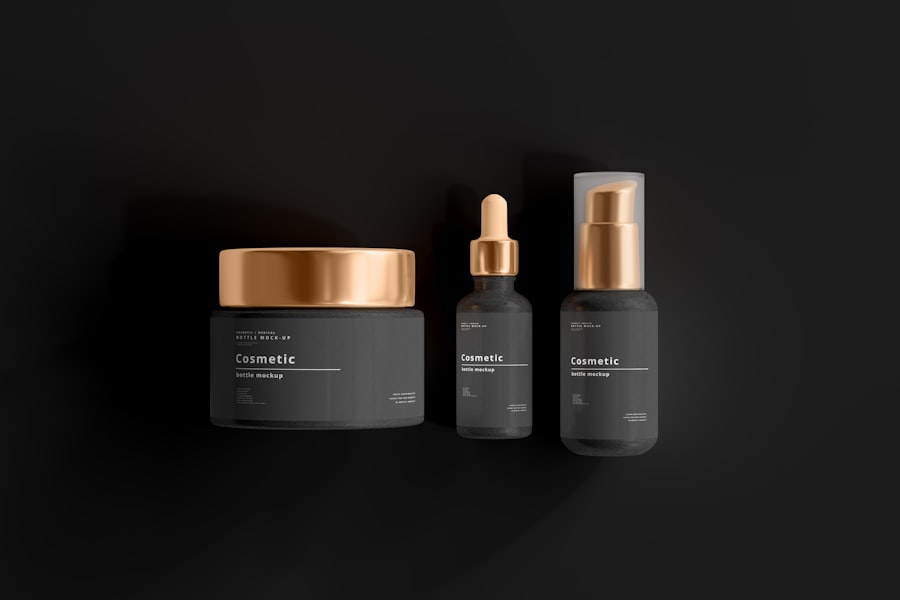After undergoing laser hair removal, it’s essential to understand the importance of aftercare. This treatment, while effective in reducing unwanted hair, can leave your skin sensitive and in need of special attention. The laser targets hair follicles, which can lead to temporary redness and swelling in the treated areas.
By prioritizing aftercare, you can enhance the results of your treatment and minimize any potential side effects. You may find that your skin reacts differently depending on your skin type and the area treated. Some individuals experience mild discomfort, while others may have more pronounced reactions.
Understanding your skin’s response is crucial in determining how to care for it post-treatment. By following a proper aftercare routine, you can ensure that your skin heals effectively and that you achieve the best possible results from your laser hair removal sessions.
Key Takeaways
- Proper aftercare is essential for successful laser hair removal treatment
- Use gentle skincare products and avoid harsh chemicals after treatment
- Avoid picking, scratching, or exfoliating treated areas to prevent irritation
- Manage discomfort with cool compresses and soothing creams recommended by your dermatologist
- Protect treated areas from sun exposure with sunscreen and protective clothing
Dos: Proper Skincare Routine After Treatment
Establishing a proper skincare routine after laser hair removal is vital for maintaining healthy skin. First and foremost, you should keep the treated area clean. Gently cleanse the skin with a mild, fragrance-free soap to remove any impurities without causing irritation.
Avoid using hot water, as it can exacerbate sensitivity; instead, opt for lukewarm water to soothe your skin. After cleansing, pat the area dry with a soft towel rather than rubbing it, which can lead to further irritation. Moisturizing is another critical aspect of your post-treatment skincare routine.
Applying a gentle, hydrating lotion or cream can help alleviate dryness and promote healing. Look for products that contain soothing ingredients like aloe vera or chamomile, as these can provide additional comfort to your skin. Remember to apply moisturizer regularly, especially if you notice any dryness or flakiness in the treated area.
Keeping your skin hydrated will not only aid in recovery but also enhance the overall results of your laser hair removal.
Don’ts: Common Mistakes to Avoid After Laser Hair Removal

While it’s important to know what to do after laser hair removal, it’s equally crucial to be aware of what not to do. One common mistake is neglecting to avoid sun exposure. Your skin will be particularly sensitive after treatment, and exposing it to sunlight can lead to pigmentation changes or even burns.
It’s advisable to stay out of direct sunlight for at least a week following your session and to wear protective clothing if you must be outdoors. Another mistake many people make is using harsh skincare products immediately after treatment. Avoid exfoliants, retinoids, and products containing alcohol or fragrances for at least a week post-treatment.
These ingredients can irritate your sensitive skin and hinder the healing process. Instead, focus on gentle, hydrating products that will support your skin’s recovery without causing additional stress. For more information on post-laser hair removal care, you can visit the American Academy of Dermatology website.
Post-Treatment Care: Managing Discomfort and Irritation
| Discomfort Management | Irritation Management |
|---|---|
| Use of pain medication | Application of soothing creams |
| Rest and elevation | Avoiding tight clothing |
| Ice packs or cold compress | Keeping the area clean and dry |
Managing discomfort and irritation after laser hair removal is an essential part of your aftercare routine. You may experience redness or swelling in the treated areas, which is completely normal. To alleviate these symptoms, consider applying a cold compress or ice pack wrapped in a cloth to the affected area for short intervals.
This can help reduce inflammation and provide immediate relief from any discomfort you may feel. Over-the-counter pain relief medications can also be beneficial if you find yourself experiencing significant discomfort. Non-steroidal anti-inflammatory drugs (NSAIDs) like ibuprofen can help manage pain and reduce swelling.
However, always consult with your practitioner before taking any medication to ensure it’s appropriate for your situation. Additionally, if you notice any unusual symptoms such as excessive swelling or blistering, don’t hesitate to reach out to your healthcare provider for guidance.
Long-Term Maintenance: Tips for Keeping Skin Smooth and Hair-Free
Once you’ve completed your laser hair removal sessions, maintaining smooth and hair-free skin becomes a priority. Regular follow-up treatments may be necessary to achieve optimal results, as some hair follicles may remain active even after initial sessions. Your practitioner will likely recommend a maintenance schedule tailored to your specific needs, which could involve touch-up sessions every few months.
In addition to follow-up treatments, adopting a consistent skincare routine will help keep your skin looking its best. Regular exfoliation can prevent ingrown hairs and promote cell turnover, but be sure to choose gentle methods that won’t irritate your skin. Incorporating hydrating serums or oils into your routine can also help maintain moisture levels and keep your skin supple.
By committing to these practices, you’ll not only enjoy the benefits of laser hair removal but also enhance the overall health of your skin.
Dos: Protecting Treated Areas from Sun Exposure

Protecting treated areas from sun exposure is one of the most critical aspects of post-laser hair removal care. Your skin will be more susceptible to sun damage following treatment, so it’s essential to take proactive measures. Wearing broad-spectrum sunscreen with an SPF of at least 30 is highly recommended whenever you step outside, even on cloudy days.
Reapply sunscreen every two hours if you’re outdoors for extended periods or after swimming or sweating. In addition to sunscreen, consider wearing protective clothing such as long sleeves or wide-brimmed hats when exposed to sunlight. This added layer of protection can significantly reduce the risk of sunburn and pigmentation changes in treated areas.
Remember that protecting your skin from UV rays is not just about immediate care; it’s also about ensuring long-term results from your laser hair removal treatment.
Don’ts: Activities and Products to Avoid After Laser Hair Removal
After laser hair removal, certain activities and products should be avoided to ensure optimal healing and results. For instance, refrain from engaging in strenuous exercise or activities that cause excessive sweating for at least 24 hours post-treatment.
Additionally, avoid using hot tubs, saunas, or steam rooms for at least a week after treatment. The heat can exacerbate irritation and sensitivity in the treated areas, leading to discomfort or complications. Similarly, steer clear of swimming pools with chlorine until your skin has fully healed; chlorine can be harsh on sensitive skin and may cause further irritation.
Seeking Professional Advice: When to Consult a Dermatologist
While most individuals experience mild side effects after laser hair removal that resolve quickly with proper care, there are instances when seeking professional advice becomes necessary. If you notice any unusual symptoms such as persistent redness, blistering, or signs of infection like pus or increased pain, it’s crucial to consult a dermatologist promptly. They can assess your condition and provide appropriate treatment options.
Additionally, if you have concerns about the effectiveness of your laser hair removal results or if you’re unsure about when to schedule follow-up treatments, don’t hesitate to reach out to your practitioner for guidance. They can offer personalized advice based on your unique situation and help you navigate any challenges you may encounter during your post-treatment journey. Remember that prioritizing your skin’s health is essential for achieving long-lasting results from laser hair removal.
If you’re looking for more information on laser hair removal, you may want to check out this article on how to prepare for your laser hair removal appointment. This article provides helpful tips on what to do before your treatment to ensure the best results. It’s important to follow these guidelines to make the most of your laser hair removal experience.
FAQs
What is laser hair removal aftercare?
Laser hair removal aftercare refers to the steps and precautions that should be taken after undergoing a laser hair removal treatment to ensure proper healing and optimal results.
What are the dos of laser hair removal aftercare?
Some dos of laser hair removal aftercare include keeping the treated area clean and moisturized, avoiding sun exposure, wearing loose clothing, and following the specific aftercare instructions provided by the treatment provider.
What are the don’ts of laser hair removal aftercare?
Some don’ts of laser hair removal aftercare include avoiding hot showers, saunas, and excessive sweating, refraining from picking or scratching the treated area, and staying away from harsh chemicals or exfoliants.
How long should I wait before exposing the treated area to the sun after laser hair removal?
It is recommended to wait at least 2 weeks before exposing the treated area to the sun after laser hair removal. Sun exposure can increase the risk of complications and should be avoided during the healing process.
Can I shave or use hair removal creams after laser hair removal?
It is generally safe to shave the treated area after laser hair removal, but it is important to avoid using hair removal creams or waxing, as these methods can interfere with the hair follicles targeted by the laser.
Is it normal to experience redness or swelling after laser hair removal?
It is normal to experience some redness and swelling after laser hair removal, but these symptoms should subside within a few hours to a few days. If the redness or swelling persists or worsens, it is important to contact the treatment provider.
Can I apply makeup or lotions to the treated area after laser hair removal?
It is generally safe to apply gentle, non-irritating lotions to the treated area after laser hair removal, but it is important to avoid using makeup or products that contain harsh chemicals or fragrances, as these can irritate the skin.
How many laser hair removal sessions are typically needed for optimal results?
The number of laser hair removal sessions needed for optimal results can vary depending on factors such as hair type, skin tone, and the area being treated. On average, most people require 6-8 sessions spaced several weeks apart.
What should I do if I experience blistering or crusting after laser hair removal?
If blistering or crusting occurs after laser hair removal, it is important to keep the area clean and dry, avoid picking or scratching the affected area, and contact the treatment provider for further guidance.
Is it safe to exercise or swim after laser hair removal?
It is generally safe to exercise and swim after laser hair removal, but it is important to avoid excessive sweating and chlorine exposure for the first 24-48 hours after treatment to minimize the risk of irritation or infection.
When can I expect to see the full results of laser hair removal?
It can take several weeks to months to see the full results of laser hair removal, as the treated hair gradually falls out over time. Patience is key, and it is important to follow the aftercare instructions to ensure the best possible outcome.





